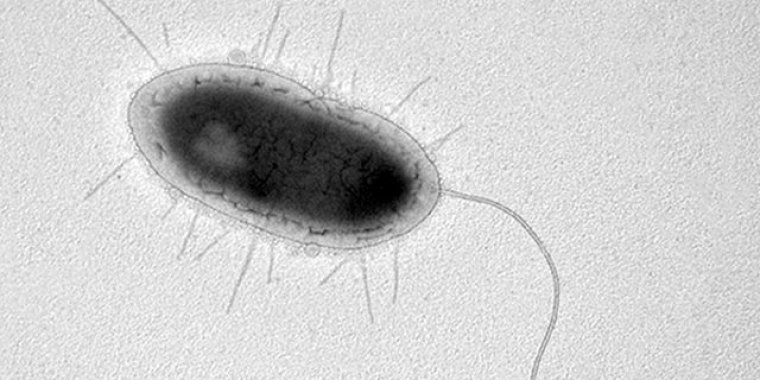| News / Science News |
Bioinsecticide-minded Researchers Prospect for Purple-Pigmented Bacterium
From the tidal marshes along the lower Potomac and James rivers in Maryland and Virginia, comes a newly discovered species of bacteria that could help keep destructive crop pests at bay.

A newly discovered marsh-loving bacterium, Chromobacterium phragmitis could yield new bioinsecticide ingredients. Photo: Joseph Mowery
The tidal marshes along the lower Potomac and James rivers in Maryland and Virginia support a rich array of aquatic and terrestrial wildlife—from blue crab and bass, to mud turtles, white-tailed deer and waterfowl among other inhabitants.
A team of Agricultural Research Service (ARS) scientists collected the bacterium from marsh water and sediment samples.
They named it Chromobacterium phragmitis and determined that it was a new species using genetic sequencing techniques.
The researchers have since begun testing the bacterium's lethality to the cabbage looper, seedcorn maggot, red flour beetle and other pests.
The researchers' tests of C. phragmitis expand on the findings of retired ARS microbiologist Phyllis Martin. She identified the very first insecticidal Chromobacterium species in 2003 from decomposed hemlock leaves collected in the Catoctin Mountain area of north-central Maryland.
That species, which Martin named C. subtsugae, was subsequently licensed by a commercial firm and sold under the trade name Grandevo.
"Chromobacterium species are not insect pathogens, they just happen to make things that kill insects. This is actually very nice, because you don't need to spray living bacteria," commented Michael Blackburn, an ARS entomologist with the IIBBL.
Blackburn and his colleagues are keen to learn whether their marshland discovery, C. phragmitis, possesses the same "recipe" for pest-control success that Martin's species does—namely, a cocktail of compounds that repel, slow the growth of, or kill susceptible insect pests.
Those compounds, which include Chromamide A, proved toxic to varying degrees to Colorado potato beetles, corn rootworms, diamondback moths, whiteflies and other agricultural pests, some of which have become resistant to commonly used insecticides.
Of four strains of C. phragmitis that the researchers tested in insect-feeding trials, one labelled IIBBL 113-1 proved most lethal to immature cabbage loopers, adult red flour beetle, seedcorn maggots and diamondback moths.
Cabbage loopers, leaf-eating caterpillar pests of both garden-variety and commercially grown crops, were especially vulnerable and began dying off three days after ingesting artificial diet pellets containing the rod-shaped bacterium. By six days, 100 percent had died.
According to Blackburn, upcoming research will include determining what makes C. phragmitis toxic to these pests and identifying non-target insects that could be affected—information important to ascertaining the bacterium's commercial prospects as a bioinsecticide.
C. phragmitis is one of several Chromobacterium species that the team has discovered. His "prospecting" for this group of purple-colored bacteria ranged from Maine to Florida.
The team named C. phragmitis after the wetland grass species that dominated the marshland sites where the microbe was found.
"Chromobacterium is known to inhabit wet habitats, so we sampled as many types of marshes and bogs as we could find," explained Blackburn. "Thus far we don't know if the insecticidal factors from other species are the same or different as the commercialized one. However, IIBBL 113-1 was the most toxic strain of C. phragmitis we isolated." (Agricultural Research Service)
YOU MAY ALSO LIKE





